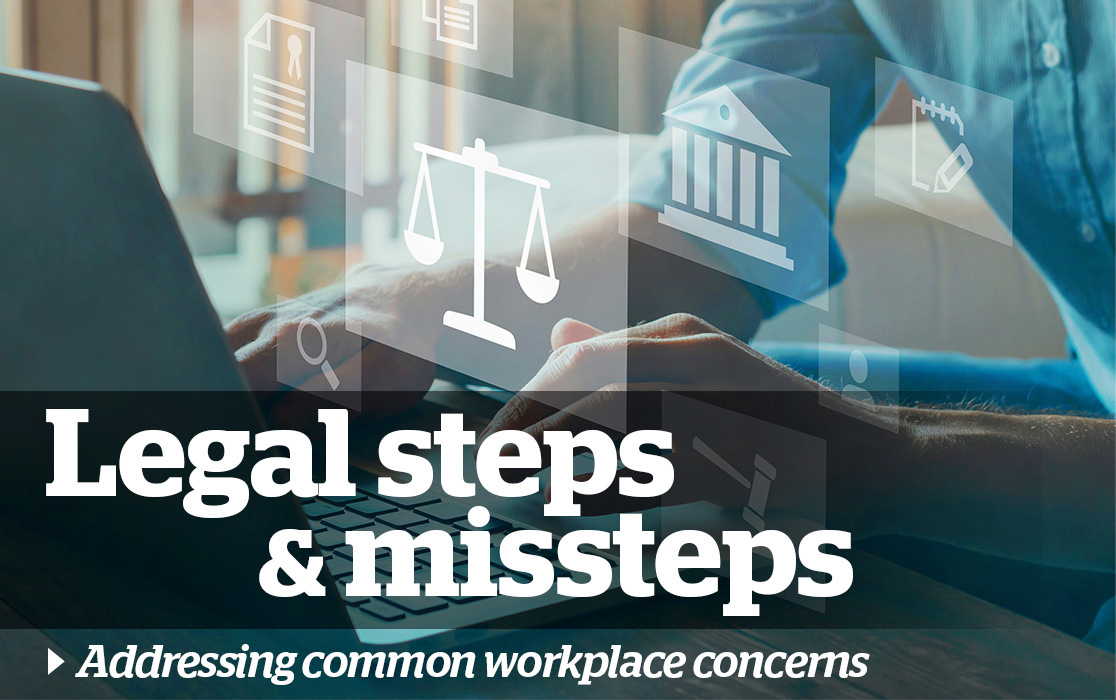

Features
Columns/Blogs
Terminations/Wrongful Dismissal
Legal
Workplace Legislation
To terminate, or not to terminate, that is the most confusing COVID-19 question
By John Hyde

EDITOR’S NOTE: ‘Legal steps & missteps: Addressing common workplace concerns’ is a weekly Talent Canada series, in partnership with John Hyde of Hyde HR Law in Toronto. This series takes a deeper look at issues in which organizations can be proactive to prevent legal issues and highlight where common errors occur.
It seems that with each passing week, employers are inundated with new rules affecting their workforce during the COVID-19 pandemic.
Keeping track of the ever-changing rules, as well as the various government support programs available to both employers and employees, can be a daunting and confusing task, particularly while organizations are forced to make swift and difficult business decisions.
Employers have been forced to take steps to terminate, but in some cases, these may have been missteps.
In the early stages of the pandemic, faced with sweeping lockdowns and uncertainty, employers across the country had no choice but to temporarily lay off employees.
At that time, a portion — if not many — of those layoffs were likely unlawful. However, employees were not in a strong position to protest and mostly acquiesced in the hopes of returning to work.
In response, the government ushered in the Canadian Emergency Response Benefit (CERB) to assist laid-off employees, and the Canadian Emergency Wage Subsidy (CEWS) to encourage employers to recall those laid-off employees back to work.
Legislatures across the country then ushered in temporary, emergency legislation to prevent those temporary layoffs from automatically becoming terminations under statute, thereby relieving employers of the obligation to pay out impossible termination packages to laid-off staff.
However, neither CERB and CEWS, nor the temporary changes to the legislation, have changed employers’ obligations when terminating employees.
Practically, what this means for employers is that, when terminating employees amid the pandemic, the usual rules continue to apply. Namely: employers must follow the terms of the contracts and all applicable laws. The pandemic does not alleviate these requirements.
There are, however, unique features to the pandemic which employers must consider, many of which were just addressed in a recent Ontario court decision.
Length of notice period
Length of notice period is the first consideration that should be provided to an employee upon termination.
The legal rationale of reasonable notice is to provide an employee with an opportunity to find comparable employment, taking into account various factors — including the state of the economy.
Employees who have been terminated during the pandemic have all argued that the economic downturn warrants a longer notice period, since it will take much longer for them to find work under the current circumstances.
In addressing that point, an Ontario court recently ruled that, because the impact of the pandemic was speculative early on, it is not much of a factor for employees terminated in the early stages of COVID-19.
Conversely, however, organizations should expect employees terminated later on in the pandemic to use this decision to argue that they deserve a longer notice period, having been terminated once the extensive impacts of COVID-19 were known.
Content of notice period
The second consideration is the content of the notice period, particularly as it pertains to performance-based compensation.
The legal presumption is that, during the period of reasonable notice, an employee should be provided with everything they would have earned had they continued working.
Prior to the pandemic, the method of prospectively calculating performance-based compensation during the notice period was to look at past performance as a predictor of what the employee would have earned had they continued working.
Post-COVID-19, employers should heavily scrutinize such an approach, particularly if there is no realistic prospect that the employee would have earned that compensation had they continued working during the pandemic.
Interaction between reasonable notice and CERB or EI
Finally, employers should consider the interaction between reasonable notice and CERB or employment insurance (EI).
While neither CERB nor EI relieve an employer of its obligations to provide reasonable notice, prior to COVID-19, EI was relevant to the extent that employers have joint and several liability with employees for any overpayment under EI legislation.
As such, it has always been prudent for any employer negotiating a severance package to ensure that employees who received any EI after termination, to either pay it back to the government before receiving any monies from the employer, or agree that the employer will hold back the difference.
Post-COVID, in what is a boon for employees, they have been able to collect CERB and severance at the same time. After Sept. 27, 2020, as a temporary measure, there is currently no penalty to employees who collect EI and severance at the same time.
As we do not expect these temporary windfalls for employees to remain forever, employers can use this to their advantage in negotiations with employees who would be well served finalizing their terminations prior to the rules reverting to normal.
The interactions between government programs and legislative responses to the pandemic are constantly evolving.
While the need to terminate employees may be more urgent, employers would be wise to ensure they are complying with their legal obligations while doing so.
 John Hyde advises management on all aspects of employment and labour law, including representation before administrative tribunals, collective agreement negotiation, arbitrations, wrongful dismissal defence and human rights.
John Hyde advises management on all aspects of employment and labour law, including representation before administrative tribunals, collective agreement negotiation, arbitrations, wrongful dismissal defence and human rights.
Oren Barbalat, an associate at Hyde HR Law, co-wrote this commentary.
Print this page